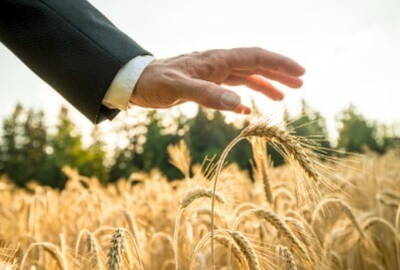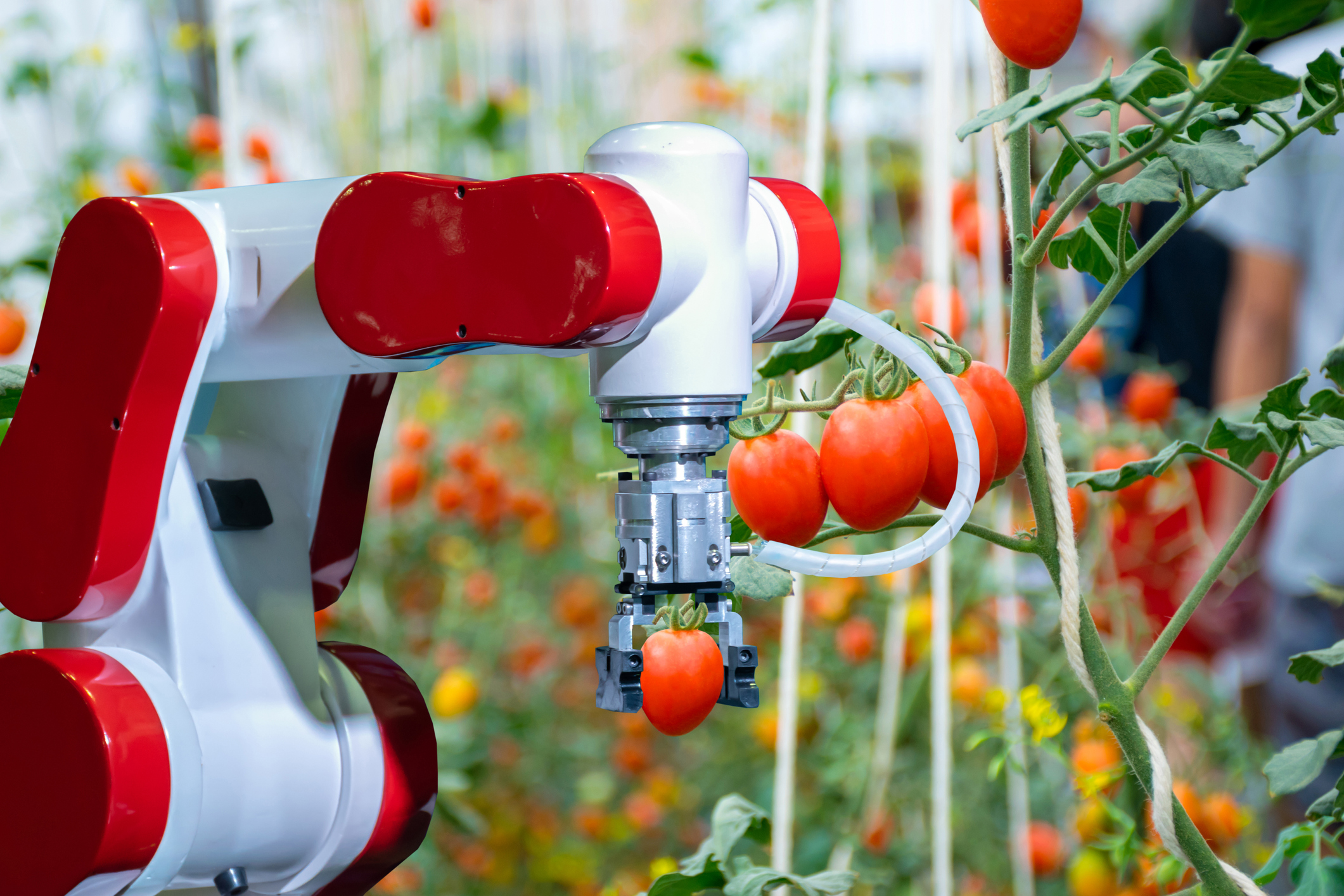The agricultural industry is one of the most important industries in the world since it provides human beings with a fundamental need: food. The agricultural industry has embraced technology to meet the ever-growing demand for food. The industry needs to produce 70% more food by 2050 to feed a global population of 9.7 billion and has recently focused on increasing yield through automation and robotics.
Agricultural and farm robots are helping automate repetitive and slow tasks for farmers and farm workers which in turn, leaves them free to focus on other, more complex tasks. From harvesting to picking weeds, robotics is becoming an increasingly popular part of agritech and can potentially change the future of farming.
According to Verified Market Research, the agricultural robotics market was worth $3.43 billion (£2.4 billion) in 2019. The same report states that it is rising at a CAGR (compound annual growth rate) of 34.5% and is set to reach $36.86 billion (£26.82 billion) by 2027. As agriculture strives to become more efficient, robots are playing a bigger part in the industry.
What Are Agricultural Robots and Why Are They Needed?
Agricultural robots are pieces of technology that help farmers complete a range of tasks. They can be programmed to assist farmers with harvesting, weed control, planting seeds, cloud seeding, soil analysis and much more.
Today’s farmers face many challenges, including an aging population, labour shortages and the negative impacts of climate change. They have the burden of producing more food but doing so sustainably and in a way that doesn’t harm the environment. Technological advancements like agricultural robots are a huge part of accomplishing this and meet rising food demand.
How Are Robots Used in Agriculture?
There are many different types of agricultural robots, from dairy farm robots to harvesting robots and weed control robots. Check out here some of the most popular types of farm robots used in the agricultural industry today;
Pulling Weeds. Weeds are troublesome for farmers since they compete with crops for resources, reduce yield, increase costs and interfere with water flow. In the past, tilling and ploughing were thought to be a great way to deal with weeds. However, since then, scientists have discovered that this has numerous harmful effects, including increasing soil erosion, releasing carbon dioxide into the air, and increasing fertiliser use. Tilling has been stopped, but weeds are still an issue since a lot of varieties are resistant to chemicals. Pulling weeds takes up time and resources that farmers can otherwise use. That’s why weed pulling agricultural robots are so revolutionary. Scientists use machine learning and millions of images to teach these robots how to differentiate between crops and weeds and how to pull out a weed without disturbing the crop. These agricultural robots are especially important since they allow farmers to forego the use of harsh herbicides that can be harmful to people.
Spraying. Spraying farm robots are similar to weeding robots and use computer vision cameras to identify problems and spray herbicides and pesticides. Since they can identify different plants and can only spray the ones that need it, they reduce wastage and herbicide and pesticide resistance, making the spraying process much more efficient.
Monitoring and Data Collection. Drones are at the forefront of agritech and many other industries. They’ve been used for years for aerial photography of agricultural fields, but now they’re also being used for map-building, crop monitoring and 3-D imaging. Drones are an essential part of precision agriculture and data collection and can gather large amounts of data from thousands of acres of fields in a single day, whereas the same would take hours for a single acre on foot. Drones can also help with other tasks like irrigation, crop spraying, and soil analysis.
Fruit Picking. When people think of robots, they usually think of bulky robots with fingers too big to pick delicate fruits like tomatoes, strawberries and raspberries. However, this is no longer an accurate version of today’s agricultural robots. From delicate fruits like strawberries to bigger fruits like apples and kiwis, farm robots can pick fruit throughout the harvesting season. As this requires so much labour and there’s a shortage of farm workers, sometimes fruits are left to rot if they’re not ripe in time. Using fruit-picking farm robots solves the labour shortage problem and ensures that fruit does not go to waste. These agricultural robots can detect when berries and other fruit and ripe and only pick those.
Robotic Greenhouses. Indoor farming is a great solution to soil erosion and land shortages, but this is going a step further with robotic greenhouses. These fully automated systems create an autonomous farm growing vegetables and herbs in hydroponic trays. Two cloud-controlled robots oversee the growth using computer vision and sensors. While one transports the pods to different parts of the greenhouse, the other picks the individual plants. These smart, automated farms are revolutionising agriculture by making it extremely efficient. For the same yield, they boast 90-95% less water use and completely eliminate the need for pesticides.
Feeding. Farm robots don’t just feed animals. With the help of modern technology, they can customise animal feed and fill themselves up multiple times per day with fresh food. The mixture and composition of feed can be customised for each individual animal to ensure that all their needs are met. In addition to automatically providing food and drinks, these agricultural robots can even set up drinking troughs to the perfect temperature for animals like calves.
Milking. Dairy farm robots are extremely popular these days and make the milking process more efficient than ever before. Milking agricultural robots allow the cows to be milked whenever they want since they can operate 24 hours a day. Cameras and lasers determine where the teats are and the robot uses teat cups to milk the cow. These machines can even change positions when the cow decides to move.
Do You Want to Work With Farm Robots?
Agricultural robots are becoming more popular each year, and the industry is constantly expanding and looking for new talent. If you’re interested in agricultural jobs and working with farm robots, Agricultural Recruitment Specialists can help. In addition to checking out our website for the latest jobs, you can also upload your CV and let our experts help you with your career.
Contact us here for any questions you may have, and we’ll be more than happy to answer them and help you find your dream job.
Alternatively, if you are an organisation that is looking to expand your current team, then please contact us to find out more about the recruitment services that we offer, which can be tailored to your specific needs.












